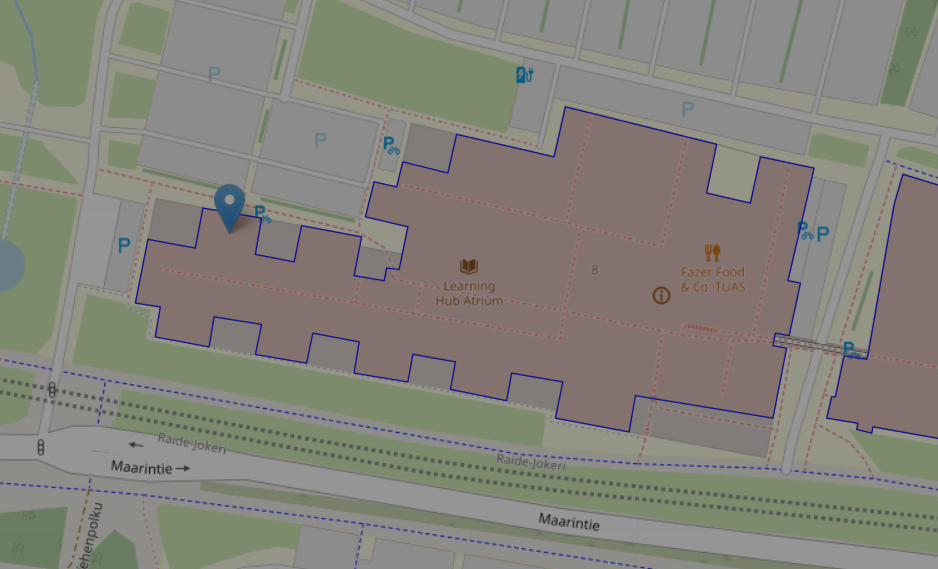TU-E4200 - Sustainable Development Goals as Entrepreneurial Business Opportunities, Lecture, 26.10.2022-14.12.2022
Kurssiasetusten perusteella kurssi on päättynyt 14.12.2022 Etsi kursseja: TU-E4200
Osion kuvaus
-
Sustainable Development Goals (SDGs) as Entrepreneurial Business Opportunities
Credits: 3
Schedule: 1 semesterTeacher in Charge: Lauri Järvilehto (lauri.jarvilehto@aalto.fi), Arne Kröger (arne.kroeger@aalto.fi) , Simo Lahdenne (simo.lahdenne@aalto.fi)
Teaching Assistant (primary contact person for practicalities): Meishan Lin (meishan.lin@aalto.fi)
PLEASE NOTE: THAT THIS COURSE WILL BE TAUGHT ON CAMPUS IN THE FALL OF 2022. NO ONLINE PARTICIPATION IS AVAILABLE. ATTENDING AT LEAST 6 LECTURES (7 TOTAL) IS MANDATORY AND NO OTHER EXCEPTIONS WILL BE CONSIDERED.
Clarification: This course is 3 credits, not 4 credits printed on the flyer, sorry about the confusion.

Location: TU6-Maarintie 8
Deadlines
Team Formation 02.11 at 23.59 Pre-reading for Case study 1 lecture 09.11 at 9.00 Pre-reading for Case study 2 lecture 30.11 at 9.00 Submissions Slides for Final Pitch 04.12 at 23.59 Final Pitch 07.12 at 23.59 Reflection Paper (Essay 1): 600-900 words (roughly 2-3 pages) 07.12 at 23.59 Peergrading Reflection Paper 14.12 at 23.59 Practical Paper (Essay 2): 600-900 words (roughly 2-3 pages) 14.12 at 23.59 Practical Paper Peergrading 21.12 at 23.59
Learning Outcomes
At the end of the course, the students will be able to i) understand some basics of entrepreneurship, ii) describe what the SDGs are, iii) can operationalize the SDGs and differentiate the SDGs from similar frameworks, iv) identify complementarities and contradictions between SDGs, v) derive business opportunities from the SDGs and vi) understand the applicability and usefulness of the SDGs for scalable ventures.
Course Content
The course focuses on introducing the Sustainable Development Goals (SDGs) as an impetus for business opportunities. In the course lectures, the SDG framework is introduced as a system of interdependent goals and differentiated from similar frameworks such as the planetary boundary framework. Viable business opportunities where the impact and profit potential of a new venture become indistinguishable. Lectures address also actual entrepreneurial cases and opportunities related to SDGs, with a focus on companies with operations in Europe. Case studies concern real-life examples of successful SDG-related ventures. Finally, the students will work in small teams to evaluate and ideate business opportunities for a particular SDG target using startup ideation tools and techniques.
Details on the course content
The course consists of seven three-hour sessions, independent teamwork in creating a business case for an SDG target and its interdependencies with other SDG targets, reading the background material, and writing the course essay. Seven of the sessions are lectures, incl. two real-life cases where the students analyze and discuss real company examples and an ideation workshop.
Agenda
L1:
Why do SDGs matter? What are the SDGs?
AVP, Lauri
26.10, 09.15-12
L2:
SDGs and Entrepreneurship
BIZ, Arne
02.11, 09.15-12
L3:
Case study 1
BIZ, Kyu
09.11, 09.15-12
L4:
Startup Dynamics
AVP, Lauri
16.11, 09.15-12
L5:
Ideation session: shortlist
AVP, Simo
23.11, 09.15-12
L6:
Case study 2
BIZ, Tamara
30.11, 09.15-12
L7:
Ideation session: final idea and Wrap up session
All
07.12, 09.15-12
-
Absence Compensatory Essays Dropbox TehtäväBelow is the compensation work guideline:Read the corresponding session slides and literature (from which you are absent), write a two pages reflection (600 words minimum) based on the session's materials and literature, and use references from the session's literature. Please note that for the course work it’s ok also to cite the draft paper even though it says “Do not cite” on the manuscript.
